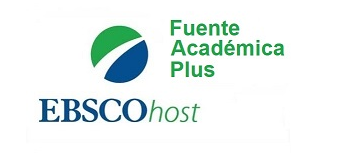50th avenue, Barranquilla: Architecture, culture and tradition
DOI:
https://doi.org/10.17981/mod.arq.cuc.24.1.2020.06Keywords:
50th avenue, road pair, culture, architectural value, historic heritageAbstract
The avenue 50, in the field of vehicular mobility, is an important road axis in the city of Barranquilla. Therefore, the District decided to undertake a project for the transformation of this race, building a road pair, which would allow to improve vehicular mobility in the city from north to south and vice versa, as well as the improvement and availability of adequate public space. During the year 2015 and 2016, a series of photographs were taken in which it was sought to capture the buildings that were in Barrio Abajo and that were going to be collapsed to start the Road Par of avenue 50. The objective of this article is Make a count of the architectural, historical, cultural and urban value that it has and that has had the avenue 50 over these decades, presenting a brief historical overview of Barrio Abajo and the avenue 50, presenting a series of photographs that reflect the buildings and / or old houses demolished in the construction of the road pair project and the transformation of the avenue 50 into a new axis of vehicular mobility and a cultural node for the city of Barranquilla.
Downloads
References
Alcaldia de Barranquilla. (2012). POT Barranquilla 2012-2032. [Ley 388]. Barranquilla: Secretaria Distrital de Planeacion. Disponible en https://www.barranquilla.gov.co/documento/perfiles-viales/?version=1.1
Carnaval de Barranquilla. (2019). ‘Baila la Calle’ regresa con más música. [Online]. Disponible en http://www.carnavaldebarranquilla.org/baila-la-calle-regresa-con-mas-musica/
Carnaval de Barranquila. (2018). El Parque Cultural del Caribe y la Carrera 50, listos para ser la Esquina Cultural del Carnaval. [Online]. Disponible en http://www.carnavaldebarranquilla.org/el-parque-cultural-del-caribe-y-la-carrera-50-listos-para-ser-la-esquina-cultural-del-carnaval/
EDUBAR. (marzo 26, 2018). El par vial de la carrera 50 ya está totalmente habilitado. Edubar.com. Disponible en http://edubar.com.co/par-vial-la-carrera-50-ya-esta-totalmente-habilitado/
Guerrero, A. (julio 16, 2016). Habilitan tramo del Par Vial de la carrera 50. El Heraldo. Disponible en https://www.elheraldo.co/local/distrito-inaugura-primer-tramo-del-par-vial-de-la-carrera-50-272289
Pérez, J. M. (marzo 28, 2018). El tramo que va desde la calle Murillo hasta la calle 53 fue abierto oficialmente este lunes. La obra permitirá mejorar la movilidad en ese sector de la ciudad. El Heraldo. Disponible en https://www.elheraldo.co/barranquilla/habilitan-par-vial-de-la-carrera-50-475082
Polo, C. (diciembre 22, 2014). Barrio Abajo: entre la nostalgia y el par vial de la carrera 50. El Heraldo. Disponible en https://www.elheraldo.co/local/barrio-abajo-entre-la-nostalgia-y-el-par-vial-de-la-carrera-50-178292
República de Colombia. Ministerio de Cultura. (1 de diciembre de 2014). Plan Especial de Protección del Centro Histórico del Distrito Especial, Industrial y Portuario de Barranquilla. [Resolución No. 3779]. Disponible en https://diario-oficial.vlex.com.co/vid/resolucion-numero-3779-2014-549019618
República de Colombia. Mintransporte. (6 de Agosto de 2002). Código Nacional de Tránsito. [Ley 769]. Diario Oficial: 44.893. Disponible en https://www.alcaldiabogota.gov.co/sisjur/normas/Norma1.jsp?i=5557
Robles, L. (octubre 12, 2017). Par Vial de la carrera 50: Escape para el arte y el tráfico del centro de Barranquilla. Publimetro. Disponible en https://www.publimetro.co/co/barranquilla/2017/10/12/par-vial-la-carrera-50-escape-arte-trafico-del-centro-barranquilla.html
Vivas, J. M. (2013). Desarrollo urbano del Barrio Abajo: patrimonio olvidado. Barranquilla: Universidad del Norte.

Published
How to Cite
Issue
Section
License
Copyright (c) 2020 MÓDULO ARQUITECTURA CUC

This work is licensed under a Creative Commons Attribution-NonCommercial-NoDerivatives 4.0 International License.
CC Reconocimiento-NoComercial-SinObrasDerivadas 4.0


 English
English
 Español (España)
Español (España)






